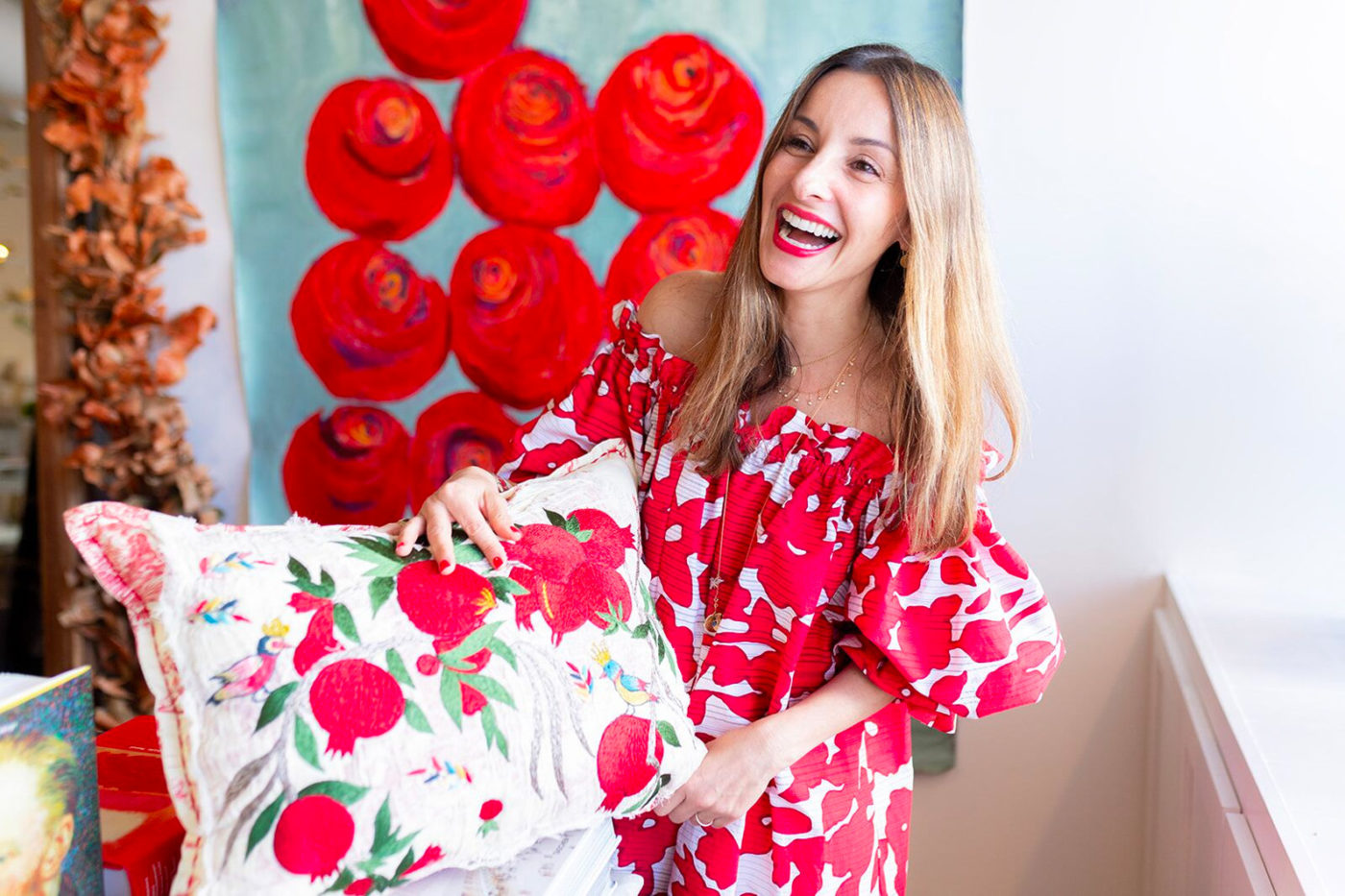There are people you meet in life that have instant positive energy when you see them, and Mimi Zein is one of them. I met her many years ago when she worked at one of my favorites, A’Maree’s boutique in Newport Beach, and was so happy for her when she opened her store in Lido Village a few years ago. She has such style and grace, and is always so sweet and engaging. You can see her sense of style the minute you walk in the door in her charming store that carries art, furniture, tabletop, clothing, jewelry, books and accessories from around the world.
Can you tell us a little bit about yourself, your family and your background?
I was born and raised in Beirut, Lebanon. I went to an American school, the International College. My dad had a publishing house that had a presence in several countries, so he had to travel a lot and the whole family tagged along with him on many of his trips. Those trips were invaluable to me. My parents are art and antiques lovers, which meant a lot of time during those trips was spent in art galleries, museums, and antiques stores. That was the start of what would become a love affair with good design, good art, and a fairly objective way of looking at what different cultures and people deem important.
What did you study in school?
I have a bachelor’s degree in communications and a master’s degree in French Literature.
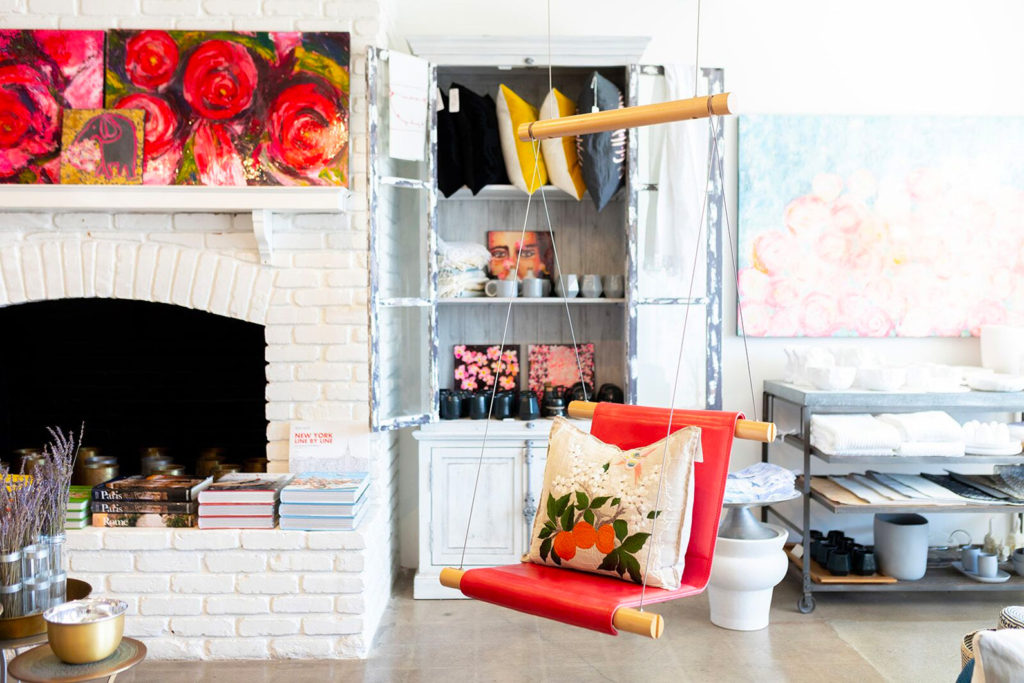
How did you decide that you wanted to open up your own store, and how did you decide what kind of store it would be?
I have always had a strong passion for design and the arts, and I’ve always been impressed by how different areas in the world affect the way we see things differently. So, I find it remarkable that beyond the differences between regions and cultures of the world there is in good design a certain continuity that binds almost all places and people to something that is basic in each thing: its function. For example, with respect to good design, one gasps at something done in a novel if not startling manner yet, at the same time, triggers a sense of familiarity: it is, when all is said and done, for sitting; it is, at the end of the day, for illumination; it is, after all, for drinking, etc. It was that feeling that drove me to open Aleph, mainly, to try to recreate that experience in the store.
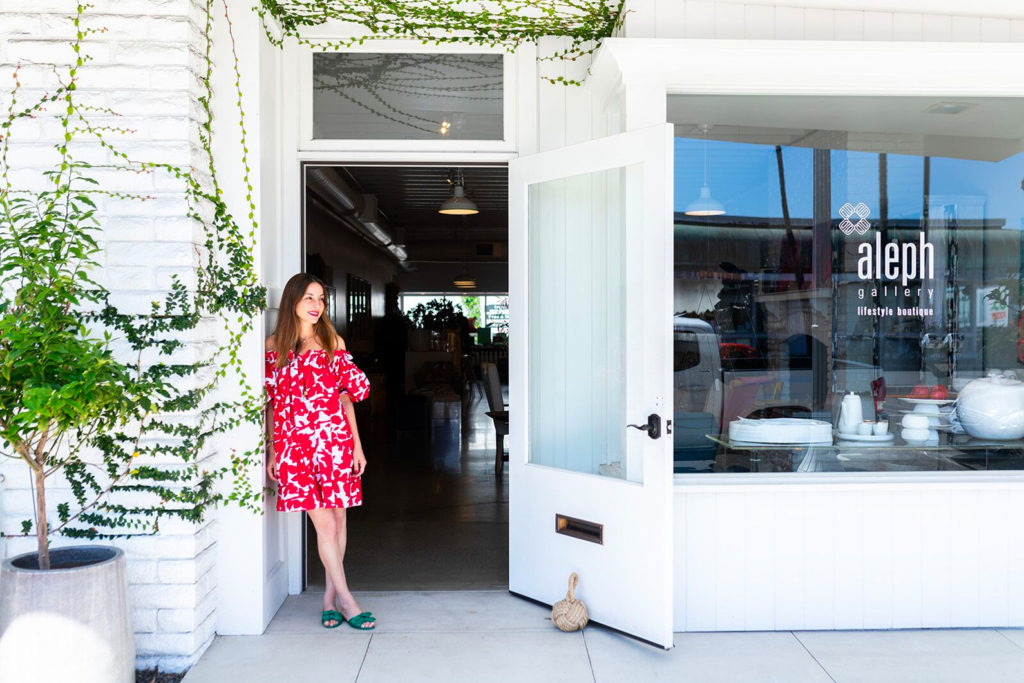
What does Aleph stand for?
Aleph is the first letter in many languages. The Phoenician adaptation of that letter gave rise to the Greek alpha, or what we now know as the letter A. I travel the world trying to curate the best that each region offers in design, fashion, etc. I named the store Aleph in that spirit; a place where many cultures meet through good design.
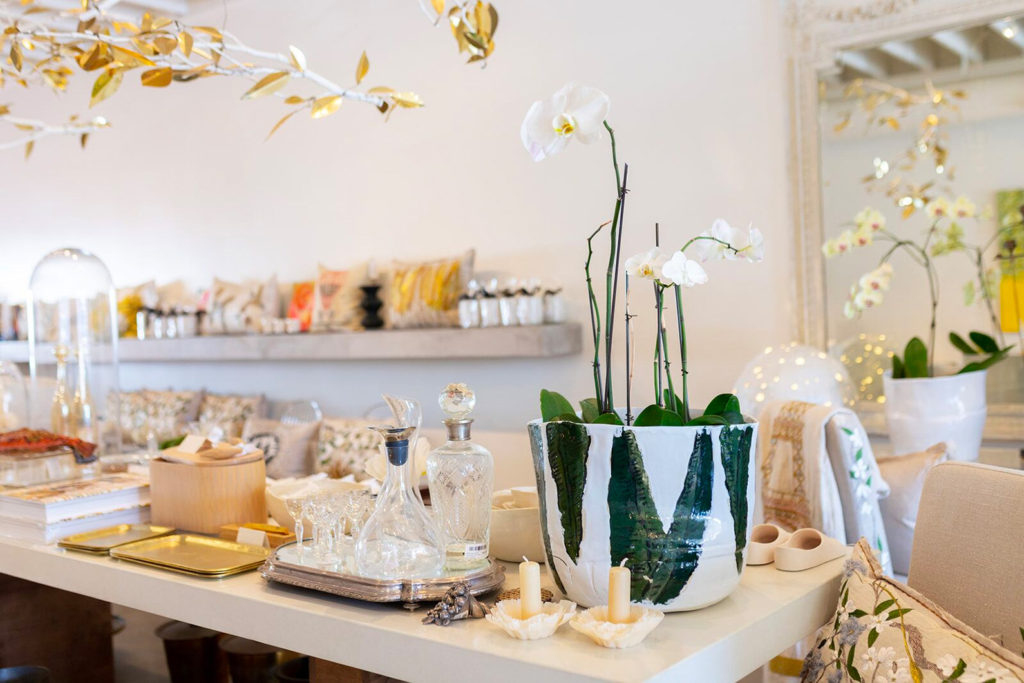
Were there any challenges in opening the store, and how did you overcome them?
Challenges are part and parcel of any new beginning and the sooner one realizes that not everything is going to stack up the way they envisioned the better chance they have tackling the unknown. I wanted to open Aleph because, like most people venturing into their own business, I had a passion for something that I wanted to share and hoped will succeed. The trick for me was to engage as many of those around me as possible. I took their opinions objectively and very seriously and ran different scenarios so that I could have different options if the first, the second, or even the third option didn’t work.
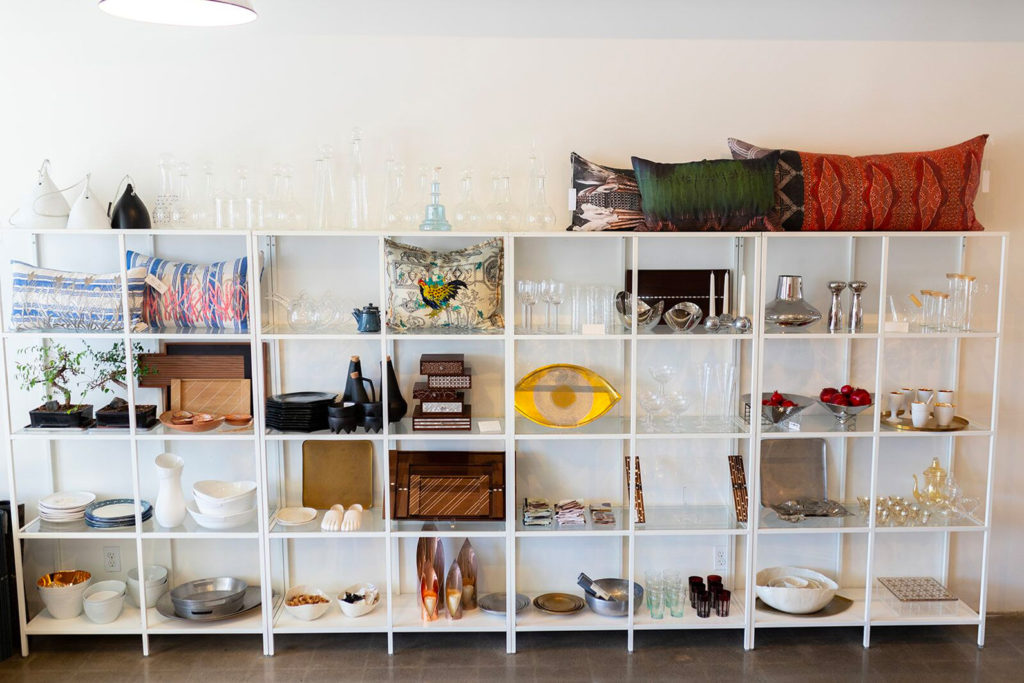
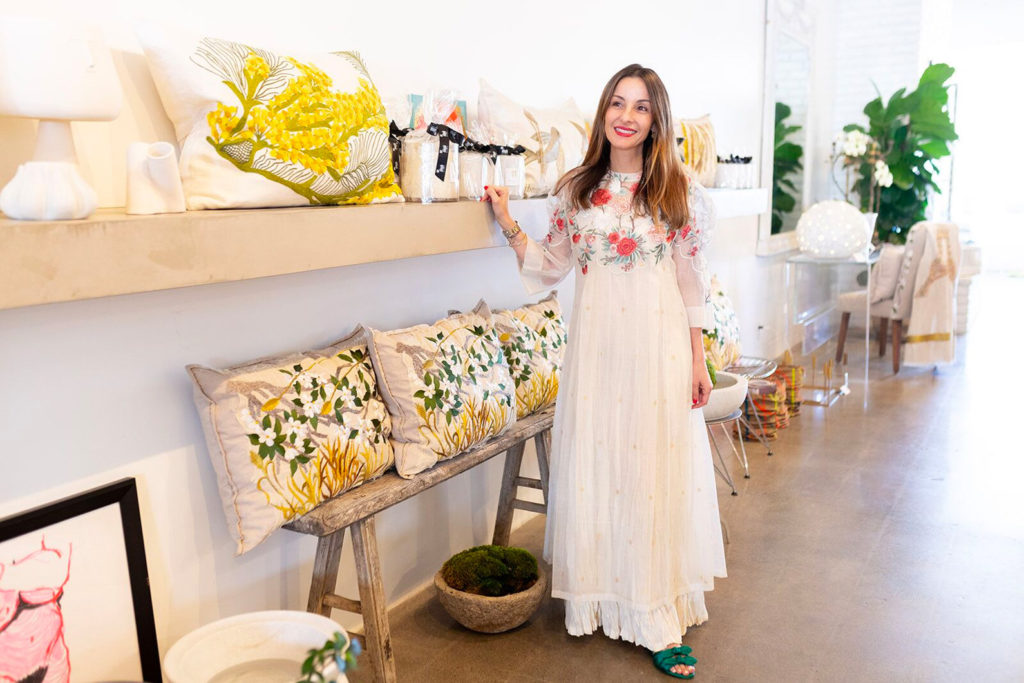
So many people want to own their own business, but don’t because it is overwhelming. Can you share what makes it all worthwhile?
You’re right, it can definitely be overwhelming. Many things make the venture worthwhile, but one in particular is people reacting positively to what you’ve done. There is something very special about seeing people enjoy the fruits of your labor — you’re happy that you made a connection; a connection between yourself and the customer, and between the designer, who, in many cases, is working thousands of miles away, and the customer.
What are the parameters for the lines that you carry? I love that you have al little of everything, from books to jewelry to furniture and accessories. I have found some very special vintage glasses for wedding gifts and I love that they are one of a kind.
It gives me great joy when I see you at the store. You have a great sense of design and I am always interested to see what is going to catch your eye. As far as parameters, the only parameter is probably that the objects that are housed in the shop are of good design, otherwise, I adhere to no parameters, at least as concerns the type of product we carry. That was a conscious decision because I wanted those entering the store to experience the objects in context, a little like entering a home; there is art, furniture, small objects, tableware, vases, etc.
You try and search out brands that are handmade and unusual, and some that are made solely by women- how hard are they to find and why did you make that choice?
Aleph’s mission is to provide a venue for designers and artists from different parts of the world where their product can be showcased in a setting that gives the nod to the modern yet insists on the traditional way of doing things; to that which insists on moving forward yet is resistant to the mechanization of the process. It is definitely hard to find products that are designed and constructed that way, but I soon found out that the rewards of discovering them was definitely worth the time and effort.
Whatever one’s sexual identity, I adamantly believe that we’re all equal, period. That said, given that we live in a world that’s been overwhelmingly dominated by men, I felt it would only be fair to give women a chance to level the playing field. I have to say, that decision didn’t disappoint and, more importantly, I soon realized I didn’t have to make a conscious decision to pick women designers. Given that women have been underrepresented in most fields, it immediately became apparent that many of the designs that stood out were created by women. Of course, that doesn’t mean we don’t showcase men designers, after all, good design is good design, irrespective of who does it.
How often do you have to travel to buy for the store, and where do you go to search out your carefully curated collection? Where is the furthest you have had to go?
I travel about two to three times a year. My partner and I have never gone to big shows, instead, we try to work with designers and artists on an individual basis, that gives us the opportunity to learn more about the designer and their product so that we can do justice to the piece itself and what has gone into creating it. At many times the stories that helped bring about the design become part and parcel of the product and our clients seem to cherish the fact that they own something that they can relate to. We’ve traveled to a lot of countries, Paris is a recurrent destination, other places include, England, Spain, Switzerland, Lebanon, Turkey, Morocco, Egypt, Japan, Vietnam, and India.
What are some of your favorite pieces in the store? II personally love the beautiful embroidered pillows and textiles, and of course the special vintage pieces you bring in.
There’s a loveseat that we just got from Bokja that I absolutely love. I have always admired the work of Huda Baroudi and Maria Hibri, the two ladies who are behind the brand. They have worked on a lot of projects including restoring an old French tapestry that hangs in the lobby of Hotel de Crillon in Paris. They redid it and added their own embroidery on top of the tapestry. I also love the jewelry that we have now, including pieces from Alia Mouzannar. She has collaborated on this collection with the late architect Zaha Hadid, the outcome is totally amazing. Also, I love Nada G‘s jewelry, all of it is handmade and reminiscent of the old pieces produced in Khaizaran, a small town in Lebanon.
Who inspires you creatively and also in your life?
My two daughters and son are always an inspiration to me. Watching them grow, I could see all new beginnings in them. They are kind, empathetic and strong enough to stand up for themselves and others.
What does your typical work day look like? Do you have a small staff or how many people does it take to help run your gallery?That is known to be one of the hardest parts of running a business-being responsible for others.
I am very lucky, I have great people who support me, including my life partner, Zeid, and a few close friends who have worked with me and helped me since I opened Aleph. Zeid studied architecture and economics and is probably one of the most objective people I’ve met, his insights have been invaluable. He helps me both in the “business” part of the business and in choosing designers and products. We have what one might call a professional meeting every week, which mainly helps us put into a longer perspective whatever is going on at the store on a day to day basis. My friends Nancy Mulroy, Gretchen Leonard, and Cindy Halford have been there for me from the start. They have helped me with running the store, during events, and with their indispensable input. The point here is that one should use the help of the people they trust around them. Of course, having a good staff that you can count on is of utmost importance.
How have you juggled being a mother and working, and what advice can you give to those who are trying to do as well?
I opened the store when my oldest daughter was already in college and my two younger ones were in their senior year in high school. The timing was part of the plan rather than an afterthought. We are a fairly close-knit family and I believe we all felt part of an adventure; they help in the store whenever they can and they were very interested to see how the project evolved from an idea into a full functioning business, with all the responsibilities and hard work needed to make it work. Again, my advice is to try to engage the people you trust around you, especially your family, and make them part of what I would like to view as an adventure.

You are always so sweet and have the biggest smile no matter when I see you, and have such positive energy. Do you do anything like meditate or what do you do to stay so positive?
You are so kind, thank you so much! My main meditative exercise is my every other day hour- long walk on the beach. It helps me clear my mind and body and put a few things in good perspective. It is important to me to try to be present in whatever I do, although, I have to say, I don’t succeed in doing that often, but trying helps me catch a few valuable glimpses at being in the moment.
You also are a natural beauty – can you share some of your beauty routine and products you love with us and what kind of work out routine you have?
Thank you so much, that’s very kind of you! I have to say, I don’t have a big routine; I always worry about chemicals and how they might affect my health and my skin. That said, my routine boils down to washing my face with Cetaphil, a sunscreen free of oxybenzone, and, depending on the season, a retinol cream or Retin-A before I go to bed. I walk every other day and try to work-out at least two times a week.
Since you travel so much, can you share a few of your favorites internationally?
My favorite cities are probably Paris, Beirut, and Marrakesh. I know it is a bit cliché to include Paris, but it is really a special city to me, just make sure to walk it. Beirut is a mixture of cultures and serves as a great gateway to the Middle East — almost a Google Translate to the Arab World; very Western in its demeanor yet its soul is definitely Middle Eastern. Marrakesh can seem like a place that went through a time machine. There are areas where you feel, breathe, and live a period that seems to have long passed — nothing seems to have changed, from its architecture to the way people dress and behave. There is something totally magical about that.
We are so happy for you and loved hearing all about you and your beautiful gallery Mimi. Thank-you so much for sharing with AOBF!
Thank you so much AOBF! It’s my pleasure!
Aleph Gallery
3410 Via Lido
Newport Beach, CA 92663
949.200.9957
www.aleph-gallery.com
IG: @aleph_gallery
FB: alephgallery.newport/
